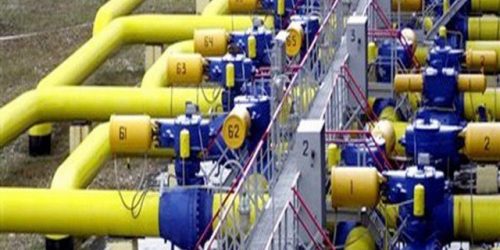Amid a rising circular debt, the Cabinet Committee on Energy (CCOE) has approved the disconnection of gas supply to industrial units for self-generation of electricity through captive power plants (CPPs) in a bid to divert gas to production of cheaper electricity.
The disconnection of gas supply to industrial units will result in diversion of 150 million cubic feet per day (mmcfd) of gas, which will help add 3,000 megawatts of cheaper electricity to the national grid and reduce circular debt.
The industrial units will be encouraged to take connections from power distribution companies. The country’s installed power generation capacity is 38,707MW whereas the anticipated capacity of power projects in the pipeline is 12,484MW. During financial year 2019-20, against power generation of 27,780MW, demand peaked at 26,252MW. With sufficient availability of power due to a substantial installed generation capacity, the Petroleum Division informed the CCOE that the continued supply of precious depleting resource – natural gas – to captive power plants did not appear to be rational as it could not match the efficiency of gas/ re-gasified liquefied natural gas (LNG)-based power plants in the national grid.
During the meeting on Thursday, the Petroleum Division said that the country had surplus electricity whereas 400mmcfd of gas production had depleted, which accounted for 9.4%, over the last two financial years.
The cabinet body on energy was told that 976 captive power plants were receiving both electricity and gas.
According to a study conducted by the Petroleum Division, there were a total of 1,211 captive power plants on systems of both gas utilities – Sui Northern Gas Pipelines and Sui Southern Gas Company, which were receiving gas and electricity. There are only 235 captive power plants that do not have electricity connection. The consumption of all captive power plants stood at 415mmcfd of gas. The export-oriented industry has 610 captive power plants whereas non-export-oriented industry has 601 captive power plants.
These power plants were the most inefficient. It is also alarming that three LNG-based power plants with higher efficiency remained shut most of the time whereas inefficient captive power plants were getting imported gas at half the rate with subsidy of Rs3 per unit on supply of electricity from the national grid. The cabinet committee, chaired by Minister for Planning Asad Umar, discussed a proposal of the Petroleum Division for a moratorium/ discontinuation of natural gas supply for captive power generation.
The proposal only applies to industries which are connected to the power grid and therefore have an alternative electricity source. The Petroleum Division briefed the committee that gas would continue to be supplied to all those industries where gas was being utilised as an integral part of the process, or where primary utilisation was not for power generation.
The new measure will be implemented in a way that no disruption is faced by any industry. Industries not currently connected to the power grid will be encouraged to shift from natural gas-based captive power generation to the grid. The measures will, in the short term, make around 150mmcfd of natural gas available for use in the power sector, which will replace expensive power generation with back-up fuels.
In the long term, around 3,000MW of load is expected to move to the power grid, which will help reduce average cost of power as well as help in reducing the circular debt build-up. The Petroleum Division emphasised that the measures would increase the overall utilisation efficiency of the scarce natural resource as large power plants were at least 30% more efficient than the captive power generation units.
The committee, while approving the proposal, directed the Petroleum Division to institute a transparent and verifiable process for implementation of the new measures and arrange third-party verification as well.
It gave directive that sufficient time be given to the industry to apply for new connections from the electricity utilities. Distribution companies will expeditiously process new connections and load enhancement applications for industries and ensure quality supply to the industries.
The committee approved the applicability of the policy from February 1 to the general industry and from March 1 to the export-oriented industry.







